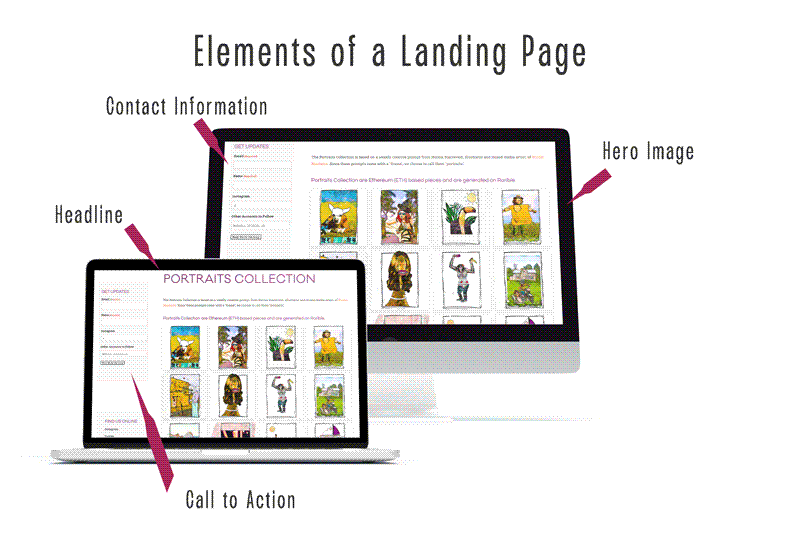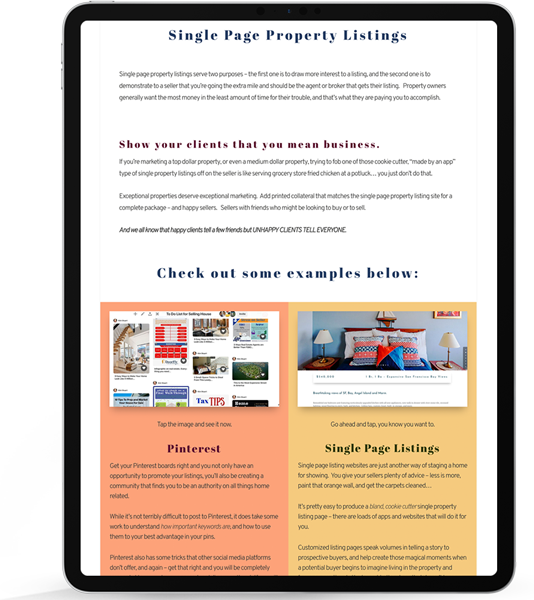Landing Pages: The Conversion Powerhouses of Digital Marketing
Most estimates state that there are more than 1 billion websites online today – this creates a stunning amount of noise and clutter for your message to cut through in order for you or your business to gain notice. In the vast ocean of the internet, landing pages serve as targeted islands designed to capture the attention of specific audiences.
Unlike a website’s homepage, which offers a general overview, landing pages are laser-focused on a single objective: converting visitors into leads or paying customers. They act as the final destination for users who click on an ad, email, or social media link, and their success hinges on their ability to persuade visitors to take a desired action.
The Anatomy of a High-Converting Landing Page
Crafting a successful landing page requires a strategic blend of clear messaging, compelling design, and user-centric elements. Here’s a breakdown of what you should look for when you decide to craft customized landing pages that resonate with surfers –
To begin, you will want to be sure that you are providing a focused value proposition. In a world filled with distractions, a landing page needs to grab attention quickly. A clear and concise headline that communicates the value proposition of the offer is crucial. This could be a free trial, a discount on a product, or access to exclusive content.
Next, we’ll want to couple that with targeted content and exceptional visuals. The content on a landing page should be directly relevant to the audience that arrived from the ad or campaign. Images and videos should be high-quality and reinforce the message being conveyed. A perfect example of topic specific landing pages would be Single Page Property Listings, designed for real estate agents to feature property listings.
Then we’re going to add a compelling call to action, or CTA. This is the heart of a landing page. The CTA should be clear, concise, and positioned strategically. It could be a button prompting users to “Sign Up Now,” “Download Your Free Guide,” or “Add to Cart.”
In order to make sure we’re keeping the landing page on topic, we’ll be using reduced navigation. Unlike a website with various navigation options, a landing page should have minimal distractions. The goal is to keep users focused on the single action you want them to take. By removing extraneous options for clicking away from the landing page, the user will avoid “analysis paralysis” and be able to focus solely on the landing page and the information it presents.
Social Proof and Credibility Builders
People are more likely to trust and convert if they see others have found value in the offer. Including testimonials, customer logos, or trust badges can significantly improve conversion rates. Search engines generally offer more “love” to pages that are topic-specific, and these pages are likely to rank higher in search results due to their singular nature.
Pay special attention to making sure that your landing pages incorporate mobile and responsive design principles. With the ever-increasing dominance of mobile browsing, it’s critical to ensure your landing page displays flawlessly across all devices. Responsive design ensures a seamless user experience regardless of the screen size.
Leveraging Landing Pages for Maximum Impact
Landing pages are versatile tools that can be employed in various digital marketing campaigns. Here are some effective ways to use them:
- Lead Generation: Capture email addresses or contact information by offering valuable resources like e-books, whitepapers, or webinars in exchange for signups.
- Product Promotion: Showcase a new product, highlight its key features, and incentivize purchases with limited-time offers or discounts.
- Event Registration: Generate interest and registrations for upcoming webinars, workshops, or conferences.
- App Downloads: Drive downloads for your mobile app by explaining its benefits and offering a seamless download process.
- Increase Brand Awareness: Create targeted landing pages for specific demographics to introduce them to your brand and its offerings.

Content is King: What to Include on a Landing Page
The content on a well-crafted landing page should be clear, concise, and persuasive. Here’s a breakdown of the key elements:
- Headline: This is your first impression, so make it count. Use strong verbs, highlight the benefit, and keep it concise.
- Subheading: Expand on the headline by providing more details about the offer’s value proposition.
- Hero Image or Video: A high-quality visual that captures attention and reinforces the message is essential.
- Benefit-Oriented Content: Explain how your offer solves the user’s problem or fulfills their need. Focus on the benefits rather than just features.
- Social Proof: Testimonials, case studies, or client logos build trust and credibility.
- Clear Call to Action: Make it easy for users to take action with a prominent and well-designed CTA button.
- Limited-Time Offers or Scarcity: Create a sense of urgency by highlighting limited availability or time-sensitive discounts.
- Contact Information: Provide an easy way for users to reach out with questions or concerns.
Landing pages are powerful tools that can significantly boost your digital marketing efforts. By understanding the key principles, crafting compelling content, and utilizing them strategically, you can transform website visitors into valuable leads and paying customers.
Remember, landing pages are all about providing a clear value proposition, a seamless user experience, and a compelling reason for users to take action. So, put these principles into practice and watch your conversion rates soar.
Testing and Optimization
The journey doesn’t end with launching a landing page. A/B testing different headlines, visuals, and CTAs allows you to continuously improve and optimize your landing page performance. By gathering data and analyzing results, you can refine your message and ensure your landing page remains a conversion powerhouse.
In order to truly measure the success rate of your landing pages, consider using multiple variations of the page design, including placement of elements, specific text CTAs, and overall color and design schemes. By measuring your response via Google Analytics or similar stats program, you can immediately see what page schematic and text your visitors are responding to, and you can tweak your page design for maximum results.
